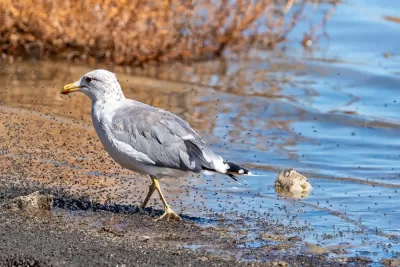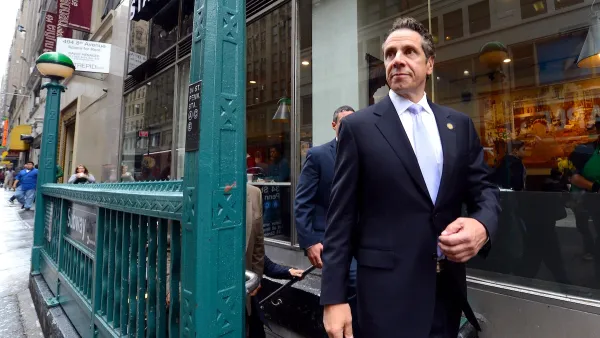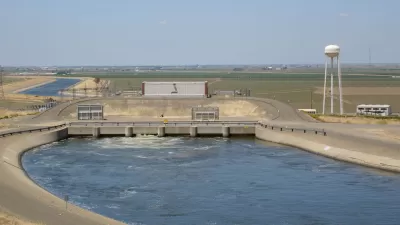Water levels at Mono Lake, nestled in a stunningly beautiful location on the eastern slope of the Sierra Nevadas that provides the eastern gateway to Yosemite, have fallen to a critical level of a local population of nesting gulls.

The nonprofit Mono Lake Committee recently filed a request with the State Water Resources Control Board that asks for the suspension of Los Angeles Department of Water and Power’s (LADWP) water diversions from Mono Lake, located about 330 miles away from Los Angeles, east of the Sierra Nevada mountain range.
According to an article by Louis Sahagún for the Los Angeles Times, the Mono Lake Committee hopes to alleviate a threat to natural habitat at the lake.
In its request, the nonprofit Mono Lake Committee argues that the combination of drought and diversions from streams that feed the lake are exposing the lake bottom near islands that host one of the world’s largest nesting gull populations. Unless this is addressed, they say coyotes will be able to access the islands and feast on the eggs of 50,000 California gulls.
Sahagún also provides a history of the city’s diversions from the lake:
Los Angeles […] has been importing water from this eerie, hyper-saline lake since World War II. Last year, the DWP rejected a committee request that it voluntarily cease its diversions of 4,500 acre-feet of Mono Lake water each year. One acre-foot of water is enough to fill an Olympic-size swimming pool halfway.
The water diverted from Mono Lake amounts to roughly 1% of the water consumed by Los Angeles residents in a year. While the city got good news about a recovered source of drinking water at the end of 2022 thanks to a superfund project in the San Fernando Valley groundwater basin, the city still relies on imported water from various environmentally troubled sources, including Mono Lake, the Colorado River, and the Owens Valley. The Owens Valley provides a regional example (located about 70 miles south of Mono Lake) of the environmental risks of L.A.s water supply diversions. The Owens Valley is completely dry, kicks up dust that is a public health risk to local residents, including the indigenous Bishop, Big Pine and Lone Pine tribes of Owens Valley Paiute Shoshone Indians.
Meanwhile the number of gull nests around Mono Lake declines. “The largest number of gull nests ever recorded at Mono Lake was about 32,000 in the early 1990s. In 2019, 11,075 nests were counted, the lowest number recorded over the 34-year course of one of the longest studies of birds in North America,” reports Sahagún.
FULL STORY: Conservationists fight to end Los Angeles water imports from Eastern Sierra’s Mono Lake

Planetizen Federal Action Tracker
A weekly monitor of how Trump’s orders and actions are impacting planners and planning in America.

Maui's Vacation Rental Debate Turns Ugly
Verbal attacks, misinformation campaigns and fistfights plague a high-stakes debate to convert thousands of vacation rentals into long-term housing.

Cuomo Is the Candidate of Both NIMBYs and Developers. What Gives?
In the New York City mayoral race, odd bedfellows align to preserve the housing status quo.

Amtrak Rolls Out New Orleans to Alabama “Mardi Gras” Train
The new service will operate morning and evening departures between Mobile and New Orleans.

The Subversive Car-Free Guide to Trump's Great American Road Trip
Car-free ways to access Chicagoland’s best tourist attractions.

San Antonio and Austin are Fusing Into one Massive Megaregion
The region spanning the two central Texas cities is growing fast, posing challenges for local infrastructure and water supplies.
Urban Design for Planners 1: Software Tools
This six-course series explores essential urban design concepts using open source software and equips planners with the tools they need to participate fully in the urban design process.
Planning for Universal Design
Learn the tools for implementing Universal Design in planning regulations.
Heyer Gruel & Associates PA
JM Goldson LLC
Custer County Colorado
City of Camden Redevelopment Agency
City of Astoria
Transportation Research & Education Center (TREC) at Portland State University
Jefferson Parish Government
Camden Redevelopment Agency
City of Claremont




























